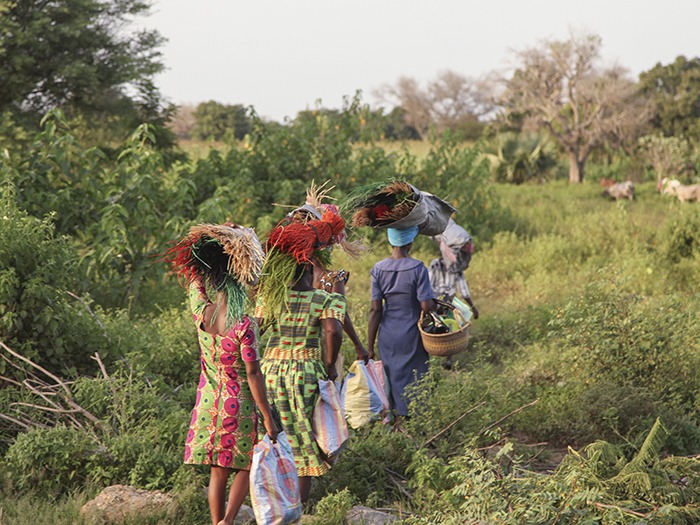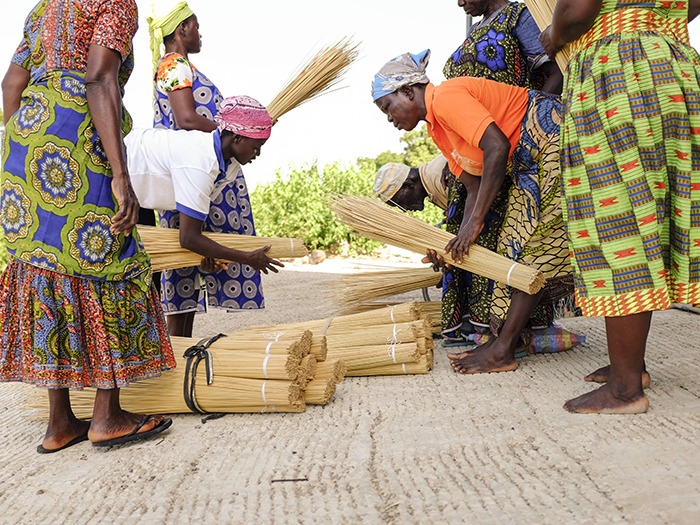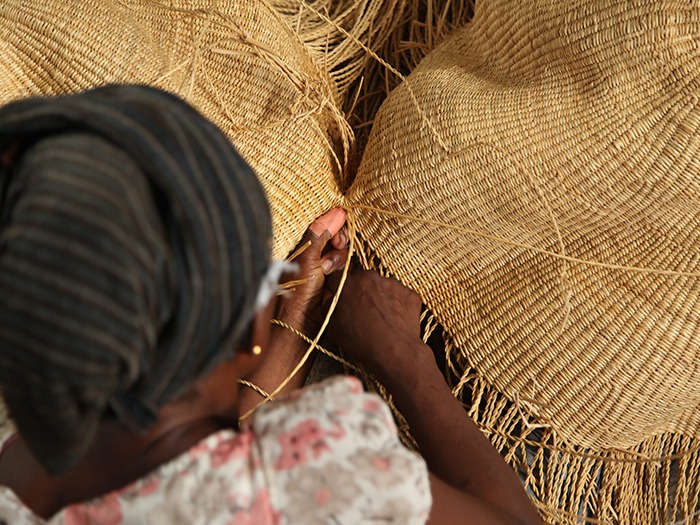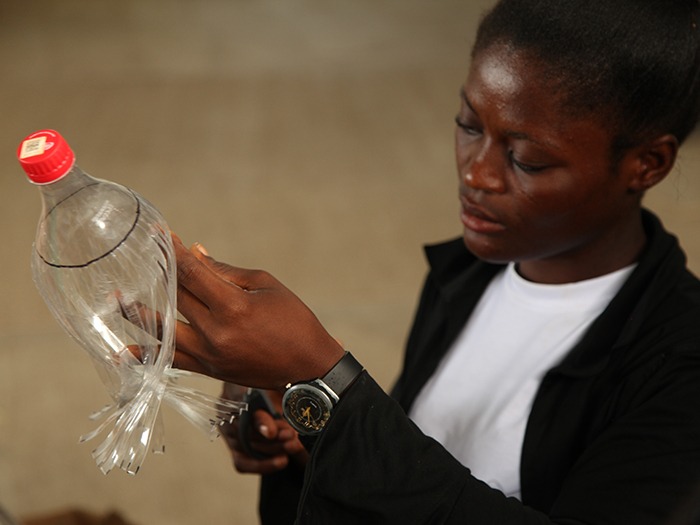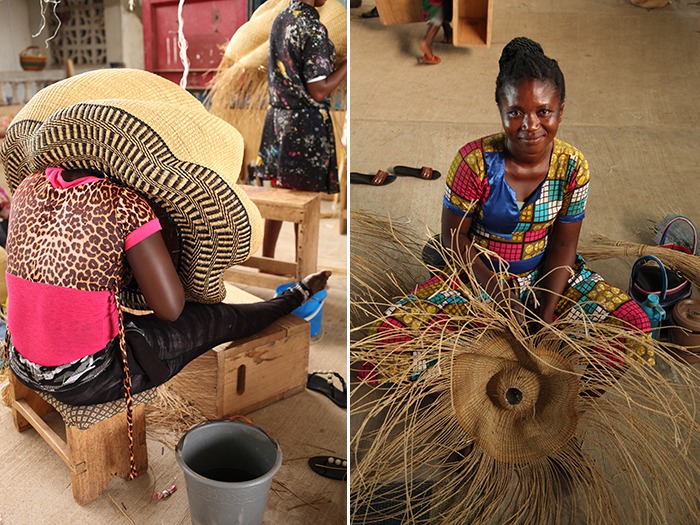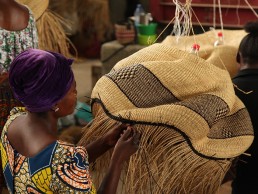
Fighting the war on plastic
First presented at the Galleria Rossana Orlandi in 2011, AcDO’s PET Lamp project continues to grow from strength to strength. darc takes a closer look at what the studio is trying to achieve through its latest lamp series originating in Ghana.
Nine years ago, in the summer of 2011, industrial designer Álvaro Catalán de Ocón (ACdO studio) was invited by fellow designer Hélène Le Drogou to be part of a project focused on the reuse of PET plastic bottles. With a growing quantity of plastic waste still invading every corner of the planet, in many locations there are insufficient resources to collect and recycle the waste and in tropical zones this problem has a unique aggravating factor. The tropical rains wash PET plastic bottles into the rivers, which in turn take them out to the sea. Once there, the bottles float on the ocean currents and despite the size of this problem no country has yet taken responsibility.
The starting point for ACdO on how best to reuse the PET plastic bottles was the profound contradiction hidden in every bottle – it has a very useful, yet short life compared to the time it takes for the materials to decompose, not to mention the energy used in its production and when applicable, in its recycling. While views are slowly changing on the use of single-use plastics, PET is still a widely used product as it is undeniably effective, cheap and practical. Around 100 million PET plastic bottles are used daily, of which only one out of every five is recycled. The rest become litter, go to landfills or end up in the ocean, polluting our ecosystem; it takes 700 years for a PET plastic bottle to start decomposing.
ACdO’s objective was to think about the validity of the object in the long-term, and to prevent it from becoming obsolete after just a few minutes. The right use of the bottle would allow it to be transformed into a coherent, functional and desirable product. Inspiration for how best to use the bottles came from analysing the bamboo stirrer used in the Japanese bamboo tea ceremony, as both objects have many elements in common; they are both made from a single material and in one piece. Furthermore, their form has a structural element and a flat surface that can be spun; weaving on this warp, the piece acquires and maintains its desired form. Analysing the bottle as an industrial piece, we can see in it traces of its manufacturing process, the lines where the moulds meet serve as horizontal and vertical references for cutting and spinning.
It is possible for PET bottles to have a second life and so ACdO looked to fuse one of the most widely produced industrial objects with a traditional craft, rooted to the earth – basketry and weaving, transforming the bottles from containers for liquids into ceiling lamps.
Basket making emerged as a response to the human need for receptacles for storing, transporting food and so on, and unlike PET bottles, traditional basketry uses materials that decay naturally. While many other crafts have become mechanised, as yet, no one has invented a machine that can make baskets.
The ACdO design team took advantage of the bottle top to join the electrical components to the lamp shade, with the neck becoming the structure, and the body of the bottle a surface on which to weave. The principal of weaving is reinterpreted and the surface of the bottle is converted into the warp through which the artisan weaves the weft.
The aim of ACdO’s project was not only to produce an attractive and desirable contemporary object mixing basket weaving and reused PET plastic bottles, but also to establish a working method full of anthropological overtones, defending the importance of maintaining the traditional techniques of different ancestral places, giving artisans freedom to express themselves, while introducing the studio’s own vision of their work and techniques. This approach has led to the identity, tradition and handcrafted techniques of each culture that has participated in the PET lamp project since 2011, being imprinted on each lamp.
Different types of basketry has been explored over the past nine years – from coiled basketry in Ethiopia and Chile, which uses grasses and rushes; plaiting, a technique used by Columbian artisans, which uses materials that are wide and ribbon-like such as palms or yucca; twining, which the studio explored in Australia and uses materials from roots and fresh palm leaves; wicker baskets come from willow and are masterfully used by the Chilean artisans in the Chimbarongo region. Then you have artisans in Thailand that are specialised in bamboo basketry techniques, characterised by its controlled production process.
Having already created six PET Lamp ceiling collections working with artisans all over the world, Bolgatanga, one of the most remote towns in Ghana, was the location chosen to develop the PET Lamp 2019 project. In the heart of the Upper East Region and just a few kilometres from Burkina Faso, Bolgatanga is known as the ‘city of baskets’ and is also the capital of the Gurunsi people, who have lived and controlled this territory along with small parts of southern Burkina Faso and northwest Togo, for centuries.
The importance given to basket weaving in this territory is one of the main reasons why ACdO decided to head to this remote corner of Africa to develop a new PET Lamp. Traditional basket weaving is regarded not only as a tool for day-to-day life and a livelihood for the people there, it also helps to provide greater social cohesion and embodies the values expressed in their culture. All this makes basketry the biggest industry in the region.
There, ACdO found the perfect partner for its collaborative project: The Baba Tree Basket, a company set up by Gregory MacCarthy, that has promoted and preserved the traditional basket weaving work of the Gurunsi community for over 15 years. The Baba Tree community is made up of over 250 artisans who weave with local straw and Elephant grass, the most popular basket weaving material used in northern Ghana – imported from the wetter south of Ghana. They mix in each piece the Gurunsi weaving traditions with an up-to-date and more modern language thanks to the introduction of the waves characteristic of this process, giving each basket a unique dynamism and rhythm.
Each and every master weaver the studio collaborated with and who continue to weave these lamps leaves their own imprint and style on their pieces, to make a collection that is full of unique details and features. Each lamp poses a new challenge for them, where they can give living form to a vital part of their culture and display it on a global market.
The concept for these lamps consisted of getting the weavers to also use another technique from India. The artisans use the Elephant grass and a type of traditional knot common in their baskets and made a series of pleats by strategically duplicating the warp at certain points of the weaving process. The outcome is that the excess material is then forced to find its natural shape by forming large folds. These new lamps hold a lot of presence in a room, with ACdO deciding to keep their natural colour so as to accentuate the pleats. They have a black border with traditional designs to give an elegant finish that also respects the traditions of their craft.
A second collection is also being developed – a selection of smaller lamps that can be combined with the other collections, this time in the brilliant colours that are the hallmark of Baba Tree baskets.
“This workshop was one of the most rewarding we have worked on to date,” says ACdO. “Discovering a country full of surprises we were able to enjoy a close and easy-going relationship with the artisans, from whom we have learnt the secrets of a technique full of riches. The experience also allowed us to open a window and enable them to update their traditional basketry by integrating PET bottles, which is a real and ongoing problem in this part of Ghana.”



